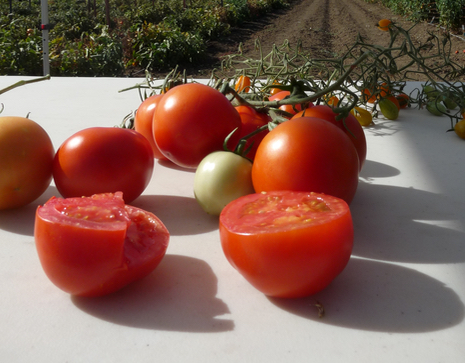Rootstocks Offer Production Attributes
Tomato Rootstocks Grafting
By Jessica Theisman, Associate Editor
California Ag Today recently spoke with Brenna Aegerter, a UC Cooperative Extension farm advisor in San Joaquin County, about grafting rootstocks to tomato plants.
“Rootstocks are cut below the cotyledons, while the scions are cut above the cotyledons at an angle,” she said.
These two plants are then clipped together and go into a high humidity healing chamber for about one week.
Aegerter explained that, “In the beginning, there is no light. They gradually increase the light because they do not want to stress the plants, and so if those two angles match … then everything grows back together.”
Each tomato plant can differ depending on the rootstock that it has been grafted to. Different rootstocks have varying levels of resistance to disease and pests. Rootstock resistance does have an effect on crop yield. If all of the fruiting varieties had the nematode resistance gene, they could potentially improve their yields.
There is great success rate on grafting these tomato plants.
“We have had pretty good success, 90 percent and up,” Aegerter said.
The remaining 10 percent is because the angles were not matched up quite right and there is not enough contact between the two tissues.
“Rootstocks are for the most part, hybrids between our cultivated tomato and wild tomato species,” Aegerter explained.
Wild tomatoes are used often to bring in new genetic material due to their diversity and natural resistance. Depending on the type of tomato that is being used, the resistance can differ.
The fruiting varieties are resistant, but are resistant to a shorter list of diseases.
“These root systems are are bigger, the crown is bigger, and sometimes they aren’t even purely resistant to the disease, but just by virtue of the fact that they grow faster, they can outgrow it,” Aegerter said.










